Transverse porosity
Transverse (or lateral) porosity can often be seen on pavements made during unfavorable weather conditions (in autumn or in winter) or when the mixture has been
|
FIGuRE 11.25 Beginning of a work site—effect shown years later, a consequence of spreading too cool a mixture at the beginning of the work site. (Photo courtesy of Krzysztof BlaZejowski.) |
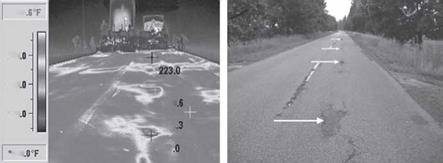 215
215
![]()
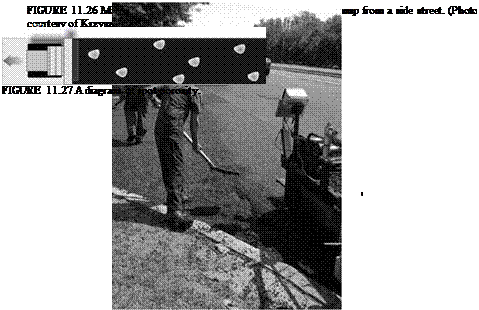 |
153
FIGURE 11.28 Local porosities: (a) an infrared image; (b) the effects after a couple of years on another road that has the same problem, arrows point at spots of pavement pot holes occurring at cyclic distances. (Photos [a] courtesy of Kim A. Willoughby, WSDOT, United States; [b] courtesy of Krzysztof Blazejowski.)
transported from far away. It has the distinctive appearance of transverse strips with increased porosity (Figure 11.29).
The most common cause of this is the buildup of cool mixture at the wings of the paver hopper. The distance between the strips of porosity in Figures 11.30 and 11.31 more or less reflects the distances between the loading places of fresh mixture into the paver from end dump trucks. This develops when the paver crew lifts the
|
FIGURE 11.29 A diagram of transverse porosity. |
|
FIGURE 11.30 Infrared images showing porosity in the form of transverse, cyclic strips, temperature in degrees Fahrenheit. (Photo courtesy of Kim A. Willoughby, WSDOT, United States.) |
|
FIGURE 11.31 An example of cyclic strips of transverse porosity on a new SMA course. (Photo courtesy of Krzysztof BlaZejowski.) |
hopper’s wings to use all of the previously delivered material before accepting a new delivery. Since the older mixture is significantly lower in temperature, after it passes through the paver this cool mixture appears as a transverse streak of porous (cold) material behind the screed.
Various preventive methods may be used to avoid this porosity, including the following:
• Paver staff should regularly remove the mixture residue on hopper wings or leave that mixture in the hopper wings until the end of the day, when it can be removed and disposed of.
• Complete unloading should not be allowed; the fresh, hot mixture should be unloaded from the truck to the hopper while some of the previous delivery of mixture is left in the hopper.






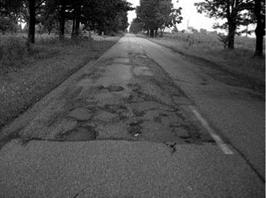

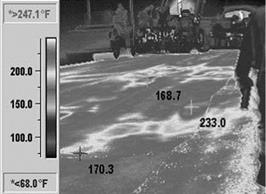
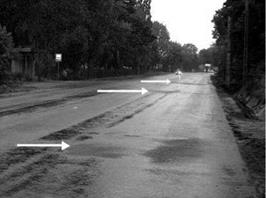
Leave a reply